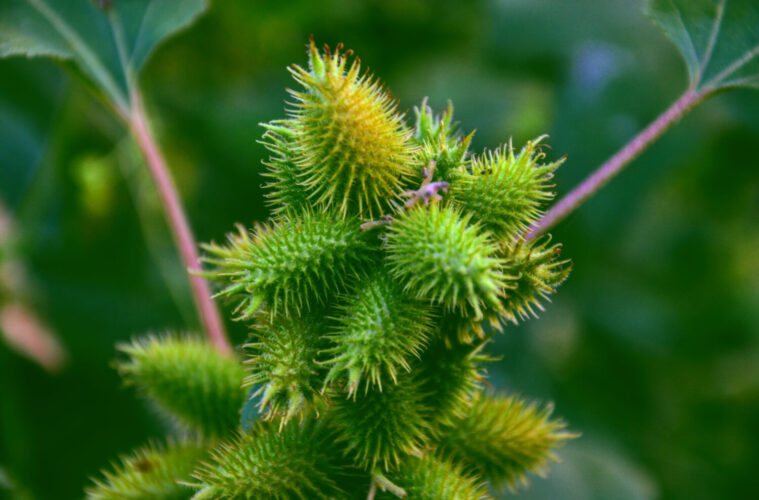There’s a new anti-aging ingredient that might just become the next big thing in the skincare industry! But would you believe that the ingredient is an invasive weed? If you’re familiar with nature, you probably already know what a cocklebur is — and South Korean researchers recently learned about its new benefit to the skin!
Will Cocklebur Be A Part of My Anti-Aging Regimen?
Every so often, new skincare ingredients become popular for their anti-aging benefits; we witnessed the trend where people recommended the use of retinol, hyaluronic acid, snail slime, vitamin C, niacinamide, etc. Recently, however, Myongji University researchers discovered that the cocklebur — a type of weed that grows in some parts of Central Asia, Southern Europe, and China — is said to also have anti-aging properties.
The researchers from South Korea used a 3D tissue model (with cell structures that are similar to human skin) for the experiment. They then applied cocklebur fruit extracts and found that the collagen production of the 3D model increased — this result is promising as collagen has long been considered to be responsible for wound healing and skin elasticity.
However, it’s not advisable that people should start rubbing cockleburs on their skins — at least not the ones that you can find in nature. The team of researchers extensively processed the cockleburs before they could find which compound is beneficial to the skin.
Eunsu Song, the lead author of the study, told Medical News Today, “Solvents play an important role in the confirmation of bioactive compounds in natural products. Most published research used methanol (to) extract solvents, which may not (be) usable for food or cosmetic ingredients. So, extraction with ethanol and analysis of bioactive composition in the cocklebur fruit was the first step in our research.”
Once the team was done extracting the necessary components, they then found the useful cocklebur compounds. Eunsu Song said, “ß-sitosterol was the main phytosterol in cocklebur. Both bioactive compounds have been studied due to (their) antioxidant, skin allergic, and wound-healing effects.”
Should I DIY a Cocklebur-Based Concoction?
Some people DIY their skincare products. After all, it can reduce cost and provide certainty of exactly which ingredients you’re putting on your skin. However, most dermatologists advise strongly against this. Now that cocklebur is recently discovered to have anti-aging properties, it might tempt you or someone you know to add cocklebur to toners, night creams, or serums. But cockleburs also have toxic compounds in them.
Eunsu Song stated, “Toxicant characteristics in cocklebur happen due to carboxyatractyloside present in burs,” she also added that “It may be one of the reasons for toxic results in a high concentration of cockleburs. Not only carboxyatractyloside but also other compounds with high concentrations can result in toxicity. Therefore, it is very important to find the proper dose through acute toxicity tests.”
Additionally, according to the National Capital Poison Center, “Although they might look and taste like sunflower seeds, cocklebur seeds should never be eaten! Carboxyatractyloside found in the seeds can cause abdominal pain, vomiting, low blood sugar, seizures, and even severe liver injury.”
Will I Be Seeing Cocklebur-Derived Products in the Market Soon?
Experts are still gauging how to find the perfect dosage of cocklebur compounds to potentially be used for skincare ingredients in the future. They’re also still planning on conducting more research soon. Eunsu Song added, “To move on to the next step, we have to determine mechanisms at the molecular levels which may involve. After that, we are going to test cocklebur with other animal alternative methods.”
To Wrap Up,
Most people want to preserve their skin’s youthful glow — that’s why there are countless anti-aging products and ingredients that promise to do just that. Recently, it’s been discovered that cockleburs also have anti-aging properties. But, again, it’s only been recently discovered! Therefore, until experts can determine whether cocklebur is safe for skincare manufacturers to add to their products, it would be best that the cocklebur you might find sprouting on the side of the road be left alone.
Advertising disclosure: We may receive compensation for some of the links in our stories. Thank you for supporting LA Weekly and our advertisers.

